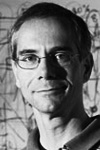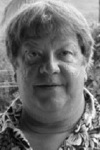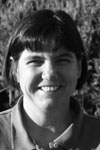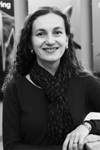principles of fluorescence techniques
april 4-7, 2016 | urbana-champaign, il
Dr. Beniamino Barbieri | ISS, Inc. | President | 1602 Newton Dr. | Champaign, IL 61822 | USA | Tel: 217-359-8681 | beniamino.barbieri@iss.com
Prof. Stephen A. Boppart | Beckman Institute for Advanced Science and Technology | University of Illinois at Urbana-Champaign | 405 North Mathews Avenue | Urbana, IL 61801 | Tel: (217) 333-8598 | boppart@illinois.edu
Prof. Boppart graduated from the University of Illinois at Urbana-Champaign (UIUC) in 1990 with a B.S. in Electrical Engineering and an option in Bioengineering. Continuing at UIUC, he completed his M.S. in Electrical Engineering in 1991, where he developed microfabricated multi-electrode arrays for neural recordings. From 1991 to 1993, at the Air Force Laser Laboratory in San Antonio, Texas, he conducted research on laser-tissue interactions in the eye, helping establish national laser safety standards. Prof. Boppart then went on to MIT, receiving his Ph.D. in 1998 in Medical and Electrical Engineering. His doctoral studies included the development of optical coherence tomography in Prof. Jim Fujimoto's laboratory. As part of a joint program between MIT and Harvard, Prof. Boppart completed his M.D. from Harvard Medical School in June 2000. Currently, Prof. Boppart is a full professor with appointments in the Departments of Electrical and Computer Engineering, Bioengineering, and Medicine at UIUC. He is Head of the Biophotonics Imaging Laboratory at the Beckman Institute for Advanced Science and Technology and along with a team of 25 researchers, is investigating novel optical diagnostic imaging technologies for basic science and translational clinical applications. From 2006-2008, he served as Founding Director of the Mills Breast Cancer Institute, and holds a joint position with Carle Foundation Hospital and Carle Clinic Association in Urbana, Illinois. His efforts included constructing a new building and developing new infrastructure to support translational research and technology development in breast cancer research between UIUC and Carle Foundation Hospital. Currently he is initiating efforts to direct a campus-wide Illinois Imaging Initiative intended to leverage the strengths and diversity of over 100 faculty working in all aspects of imaging science, technology, and application.
Prof. Richard Day | Department of Cellular & Integrative Physiology | Indiana University School of Medicine | 635 Barnhill Drive, Room 333 | Indianapolis, IN 46202-5120 | USA | rnday@iupui.eduRichard Day is a Professor in the Department of Cellular and Integrative Physiology at the Indiana University School of Medicine. His research focuses on understanding the network of regulatory protein interactions that function to control cell-type specific gene expression. His laboratory group uses biochemical and molecular approaches to define networks of protein interactions that are coordinated by specific transcription factors. These in vitro approaches are then complemented by non-invasive live-cell imaging techniques using the many different color variants of the marine invertebrate fluorescent proteins. Recent studies from the laboratory have used Förster resonance energy transfer (FRET)-based microscopy approaches to begin to define networks of protein interactions in living cells.
Prof. Martin Gruebele | James R. Eiszner Chair in Chemistry, | Professor of Physics, and Professor of Biophysics and Computational Biology | mgruebel@illinois.edu
Prof. David M. Jameson | University of Hawaii at Manoa | Department of Cell and Molecular Biology | John A. Burns School of Medicine | Honolulu, HI 96822 | USA | Tel: 808-956-5034 | Website | djameson@hawaii.edu
A student of the late Prof. Gregorio Weber, David Jameson is Full Professor in the Department of Cell and Molecular Biology at the University of Hawaii. Prof. Jameson's research interests are focused on the development and application of time-resolved and steady-state fluorescence methodologies to elucidate dynamic aspects of biomolecules, including proteins, nucleic acids and membrane systems.
Currently, his laboratory is investigating several protein systems, including dynamin, a large (98kDa) GTPase which functions to "pinch-off" membrane vesicles in pathways such as receptor mediated endocytosis and synaptic vesicle recycling. This research involves both in vitro and in vivo studies on the self-association modes of dynamin as well as its interaction with membranes and other proteins such as endophilin and Arc. His lab also has a project on Botulinum Neurotoxin funded by Allergan, Inc. This project involves biophysical studies on proteins forming the neurotoxin complex as well as development of in vitro and in vivo toxin assays based on fluorescence fluctuation spectroscopy.
Author of more than 130 peer-reviewed articles, Prof. Jameson regularly reviews grants for the American Heart Association, the National Institutes of Health and the National Science Foundation. His research has been supported by grants from the National Institutes of Health, the National Science Foundation and the American Heart Association.
Prof. Catherine Royer | CNRS | Centre de Biochimie Structurale | 29, route de Navacelles | 34090 Montpellier CEDEX | France | Tel: +33-04 67 41 79 02 | catherine.royer@cbs.cnrs.fr
Catherine Royer is Director of Research at INSERM and Director of the Center for Structural Biochemistry in Montpellier, an INSERM-CNRS-University of Montpellier 1 and 2 mixed research unit. She is a Visiting Professor at the Johns Hopkins University Department of Biophysics and an Elected Fellow of the American Association for the Advancement of Science. Her research interests involve the use of fluorescence spectroscopic methods to characterize structure-function-dynamics relationships in biomolecules.
Dr. Royer obtained her Ph.D. in 1985 in the Department of Biochemistry in the School of Chemical Sciences at the University of Illinois at Urbana-Champaign under the direction of Professor Gregorio Weber. She carried out postdoctoral studies at the University of Paris 7, the CNRS at Gif-sur-Yvette and at LURE under the direction of Bernard Alpert, Guy Hervé and Jean-Claude Brochon. She then took a position as User Coordinator and Research Physicist at the Laboratory for Fluorescence Dynamics in the Department of Physics at the University of Illinois - Urbana Champaign. In 1990 she moved to an Assistant Professorship in the School of Pharmacy at the University of Wisconsin-Madison, where she was promoted to Associate Professor with tenure in 1995. In 1997 she took the position of INSERM Director of Research in the Center for Structural Biochemistry in Montpellier.
Dr. Royer has published extensively in the field of pressure effects on biomolecular structure and interactions and on use of state of the art fluorescence approaches applied to understanding the physical basis for the control of transcription. She has served on numerous review panels (United States National Science Foundation Biophysics Panel, CNRS Section 21, Comité de Programme Biologie LURE, French Agence National pour la Recherche -- Physique et Chimie pour le Vivant) and the councils of national and international biophysical societies.
Prof. Parijat Sengupta | Department of Bioengineering and Beckman Institute | University of Illinois at Urbana-Champaign | Website: https://publish.illinois.edu/psengupta/ | parijat@illinois.edu
Prof. Silviya Zustiak | Assistant Professor, Biomedical Engineering, SLU | Adjunct Assistant Professor, Chemical and Biochemical Engineering, MST | Parks College of Engineering, Aviation and Technology | 3507 Lindell Blvd, St Louis, MO 63103 | phone: 314-977-8331 | szustiak@slu.edu
Silviya Petrova Zustiak, Ph.D. joined the Biomedical Engineering Department at Saint Louis University as an Assistant Professor in spring 2013. Prior to that, she obtained a BS/MS degree in Bioelectrical Engineering from Technical University - Sofia, Bulgaria in 2002 and a Ph.D. in Chemical and Biochemical Engineering from the University of Maryland Baltimore County, MD in 2009. During her doctoral studies under the guidance of Dr. Jennie Leach, Dr. Zustiak developed hydrogels as scaffolds for neural tissue engineering. Dr. Zustiak conducted post-doctoral research for three years at the National Institutes of Health in Bethesda, MD, at the Laboratory of Integrative and Medical Biophysics under Dr. Ralph Nossal, where she gained an extensive expertise in Fluorescence Correlation Spectroscopy (FCS). In particular, to address the growing need for non-invasive characterization of transport processes in complex media such as cells, tissues, and three-dimensional scaffolds, she has examined the utility of FCS to determine solute diffusivity and interactions in crosslinked hydrogels, the complimentary effects of binding and crowding on protein diffusivity, and the effect of multiple light scattering on the accuracy of the FCS measurements.
Dr. Zustiak’s primary research interests are in Hydrogel Biomaterials and Tissue Engineering, with emphasis on developing novel biomaterials as cell scaffolds, drug delivery devices and drug screening platforms, and elucidating matrix structure-property relationships as well as cell-matrix interactions. Biomaterial-based models are crucial for bridging the gap between traditional tissue culture and animal models by providing a cell environment that closely mimics real tissue. This research is highly multidisciplinary, merging the fields of engineering, materials science, and biology and FCS is still a crucial component of it.









